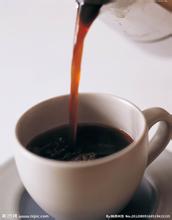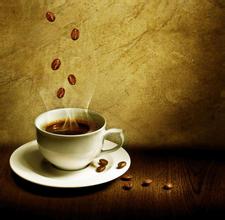Introduction of Lutesilo producing area in the western province of Malaba Coffee Manor, Rwanda
In early 2003, UCR distributed Malaba coffee through the Sainsbury's supermarket in Sainsbury and sold it in its 350 stores until Red nose Day that year. In 2003, Abauzam Gump made a net profit of US $35000. Of this, 70 per cent is allocated to farmers at a price of US $0.75 per kilogram, more than three times the profits earned by other Rwandan coffee growers and enough to cover previously unaffordable health care and education services. The remaining 30% is invested in cooperatives and used to buy calcium carbonate, an agricultural lime that can reduce the increase in acidity of the soil due to the loss of minerals by rainfall.
Coffee and beer
Since 2003, when PEARL thought that the mode of operation was self-sufficient, it gradually reduced the financial support of the Abauzam Gambi cooperative. Cooperatives provide grower loans to help improve their living standards and can invest in livestock, health insurance and education. A cooperative bank opened in the village in March, allowing farmers to maintain and manage their deposits locally without having to trek to the city of Butare.
People revolved around the computers in the new telecom center in late 2004, when the London simultaneous Brewery (Meantime Brewery) began to offer coffee beer made from coffee beans produced by Malaba. The drink is identified as an alcoholic chilled cappuccino or digestif. After tasting coffee from all over the world, the chief brewer decided to add a small amount of vanilla and chocolate to Malaba coffee, which tastes better than nutty coffee and bitter coffee from South America. The original beer had an alcohol content of 4%, the same caffeine content as coffee and was described as "silky and mellow". Coffee and beer are sold in large branches in Sainsbury and in some bars and clubs. The drink is one of the only two Fairtrade-recognised beers in the UK market, and it was not until 2006 that it lost its Fairtrade status by reducing coffee rates and increasing alcohol content (now 6 per cent). Coffee beer is still made from Malaba coffee beans and is the only coffee beer recognized in the British Isles and won the gold medal in the world beer cup coffee flavor beer category in 2006.
In 2006, the Swedish Minister of Development and Cooperation and Deputy Minister of Foreign Affairs, Karin Jemtin (Carin Jamtin), visited Malaba to expand cooperation between Sweden and Rwanda and to promote Malaba coffee to the Swedish professional market. In July 2006, a remote center (telecentre) opened in Malaba under the coordination of PEARL, USAID, NUR and Washington State University (WSU). Among them, the Digital Gap reduction Center (Center to Bridge the Digital Divide,CBDD) provides funds and resources. Three WSU students stayed in Rwanda for six weeks to help set up the centre and train local staff. The center is now run by local staff.
Geographic and climatic editing
Malaba Coffee grows in southern Rwanda, about 12 kilometers (7 miles) from the city of Butare and 150 kilometers (93 miles) from the capital, Gejali. The plan began in the Malaba area of Butare province, but was taken over by a local government organization in 2006, which is now part of the Huye district of the southern province. Due to its proximity to the East African Rift Valley and the Neuenway Forest Mountains, this zone is sloping, steep and has fertile volcanic soil. Coffee is grown at 1700 to 2100 m (5577-6889 ft) above sea level, usually with terraces on steep hillsides. The zone also has an average annual rainfall of 115 centimeters (45 inches). Most of them come from the rainy season from March to May, which is also the main coffee harvest season. The temperature at high altitude is slightly lower, with an average of about 20 °C (68 °F), which varies slightly due to seasons.
Production process
Coffee fruit
Coffee fruit
The biggest harvest season for Rwandan coffee is during the main rainy season, from March to the end of May. During the harvest season, farmers spend most of their day picking coffee fruits by hand. In the afternoon, farmers carry coffee fruits in traditional baskets made of banana leaves to a cleaning station a few hours away. The mechanic picks out the best quality crimson coffee fruit by hand and returns the remaining coffee fruit to the farmers and sells it at a low price in the market outside the Malabaga work area. The mechanic pays the farmer $0.10 per kilogram. The guild deposits the remuneration into the farmer's bank account every two weeks.
The sink technician in the process will clean the coffee immediately because the delay will ferment the sugary outer layer of the coffee beans, ruining the taste of the coffee. The coffee beans are first thrown into a deep trough, and the best quality coffee fruit goes into the bottom and passes through a machine that peels off its skin. The mechanic takes out the floating coffee fruit, processes it in the same way and allows the cooperative to sell it at a lower price in the domestic market. Coffee beans through three cooperative peeling and selection machines, remove the skin and sugary outer layer, and then let the coffee beans individually through the vibrating filter. The filter separates the highest quality A beans from those classified as Class B; the two grades are transported to the hills with a 1% slope of the waterway. In the process of transportation, coffee beans of all qualities are further classified, and there are about 15 sinks at the bottom of the channel that can capture different kinds of coffee beans. Coffee beans are preserved continuously in water. Grade A beans and grade B beans stay for two days and 15-20 hours respectively to slightly ferment and convert the remaining sugar without serious damage to the taste.
After the washed coffee beans are air-dried on the net rack, after washing the coffee beans many times to completely remove the remaining skin and sugary outer layer, the coffee beans are put into the sheltered rack to air-dry. Cooperative staff regularly flip coffee beans, while technicians continue to look for and pick out poor quality coffee beans. The two-week drying process takes place in the sun (prepare the mulch in case of rain) and keep turning the coffee beans. This step reduces the water content of coffee beans from 40% to 12%.
Then the mechanic transported the coffee beans to the technology center near Chez. Some machines installed in warehouses on the hills remove the cutin from coffee beans. The staff sent the coffee beans to nearby research institutes for final quality control-manual sorting, which was carried out by several experienced women. After bagging and labeling according to its quality, the coffee beans can be stored in the warehouse waiting for the market.

Important Notice :
前街咖啡 FrontStreet Coffee has moved to new addredd:
FrontStreet Coffee Address: 315,Donghua East Road,GuangZhou
Tel:020 38364473
- Prev

Yega Xuefei Coffee Flavor Manor, which is fascinated by thousands of coffee fans, introduces fine coffee.
In 1959, the Yega snow coffee producing area began to try the water washing method. After 1970, the jasmine fragrance of Yega was washed, and the lemon and citrus flavor was popular in Europe and America. It became a model of fine beans in Africa, and the sun treatment was gradually drifting away from Shifei. However, there are always people who will miss the feeling of the wonderful wine in the sun, the improved sun in 2006, and the second gold medal held in Ethiopia.
- Next

Light sour Tanzanian Kilimanjaro Coffee Kilimanjaro Mountain Fire area
Kilimanjaro Coffee (Kilikmanjaro Coffee) is produced in Mount Kilimanjaro, the highest mountain in Africa in northeastern Tanzania. Its coffee is of good quality, rich aroma and outstanding sour taste, so it is suitable for the preparation of comprehensive coffee. Kilimanjaro coffee is an important lifeline of the Tanzanian economy. About 17% of the foreign exchange is created by coffee, which is mainly produced.
Related
- Does Rose Summer choose Blue, Green or Red? Detailed explanation of Rose Summer Coffee plots and Classification in Panamanian Jade Manor
- What is the difference between the origin, producing area, processing plant, cooperative and manor of coffee beans?
- How fine does the espresso powder fit? how to grind the espresso?
- Sca coffee roasting degree color card coffee roasting degree 8 roasting color values what do you mean?
- The practice of lattes: how to make lattes at home
- Introduction to Indonesian Fine Coffee beans-- Java Coffee producing area of Indonesian Arabica Coffee
- How much will the flavor of light and medium roasted rose summer be expressed? What baking level is rose summer suitable for?
- Introduction to the characteristics of washing, sun-drying or wet-planing coffee commonly used in Mantenin, Indonesia
- Price characteristics of Arabica Coffee Bean Starbucks introduction to Manning Coffee Bean Taste producing area Variety Manor
- What is the authentic Yega flavor? What are the flavor characteristics of the really excellent Yejasuffi coffee beans?

